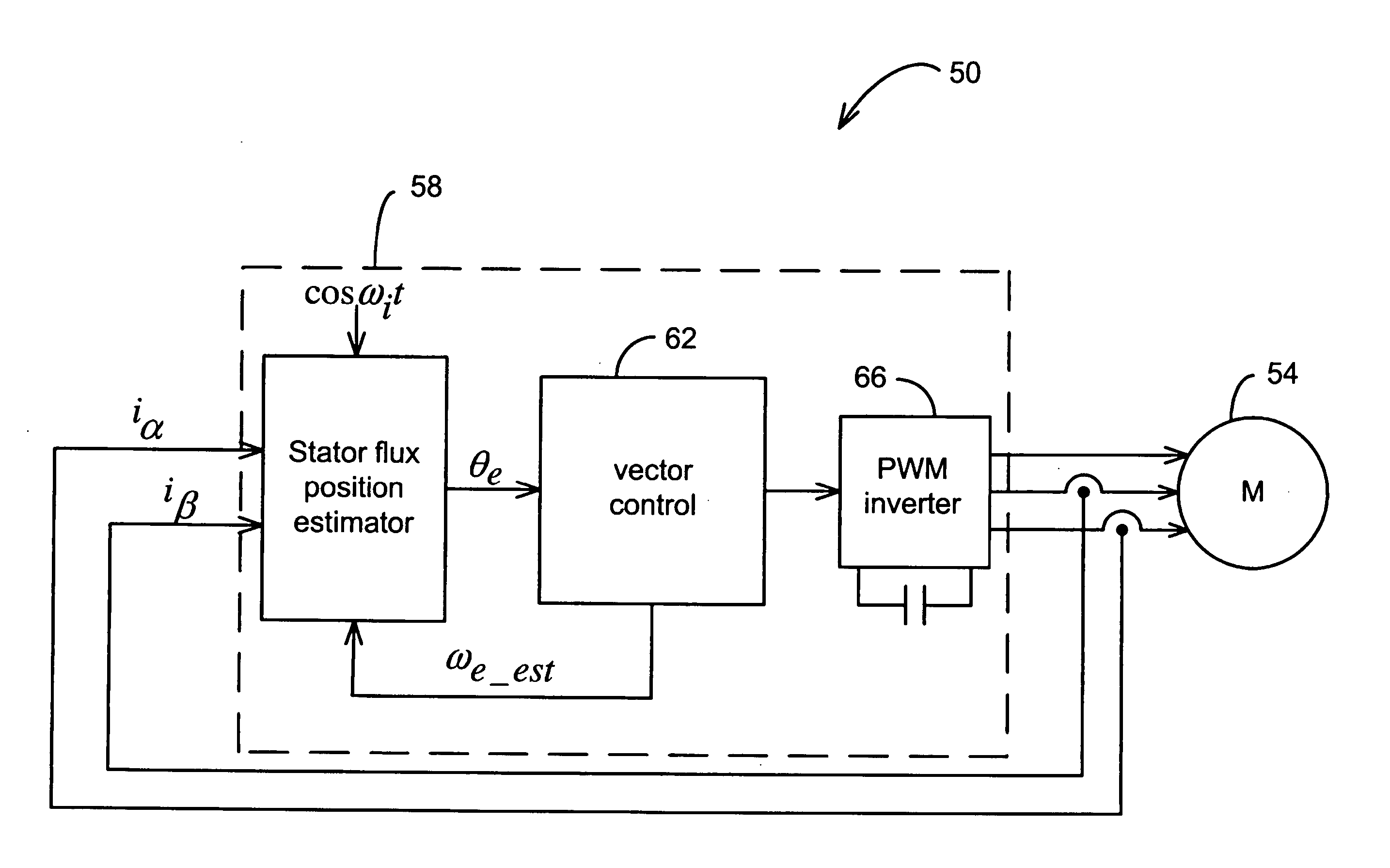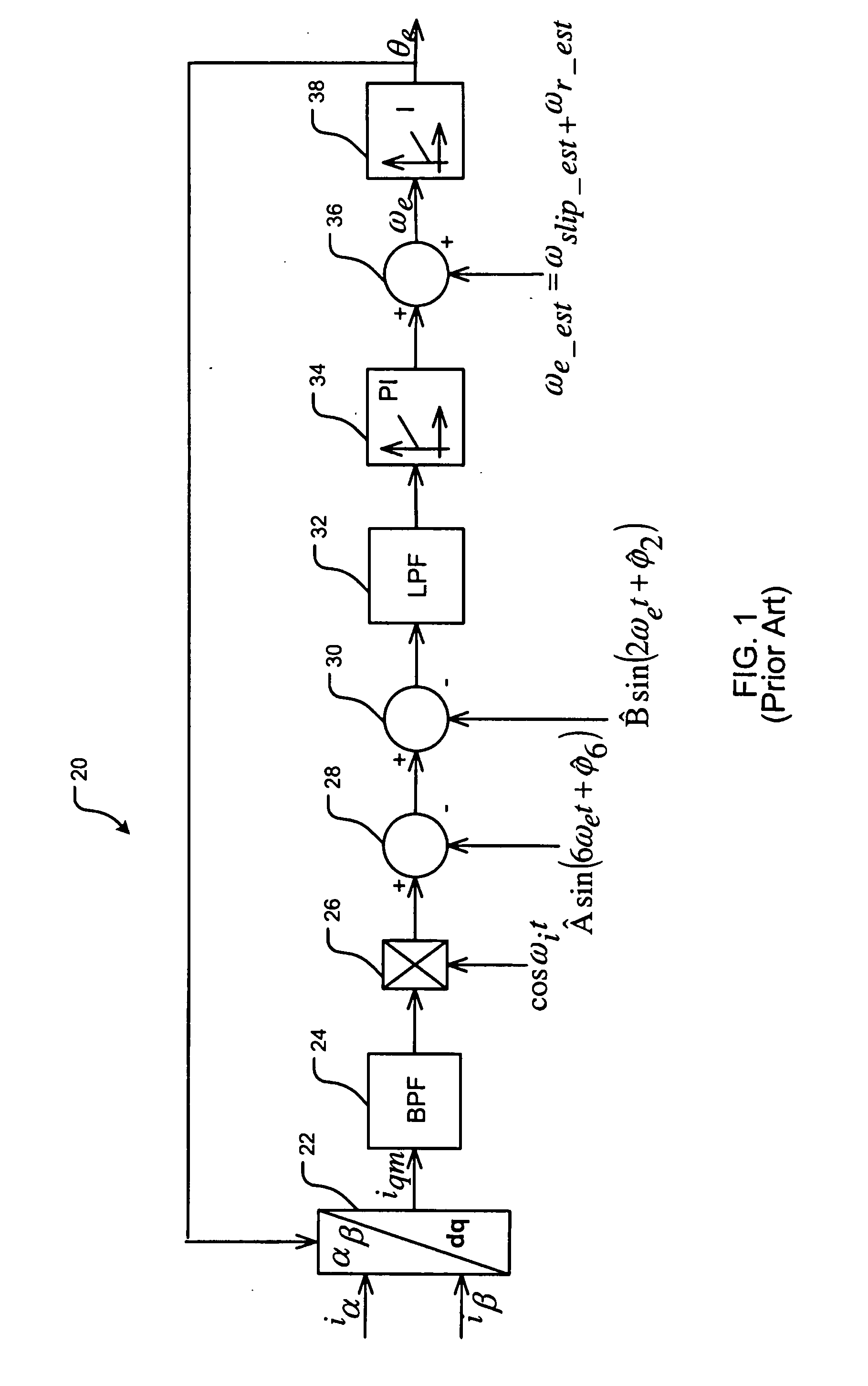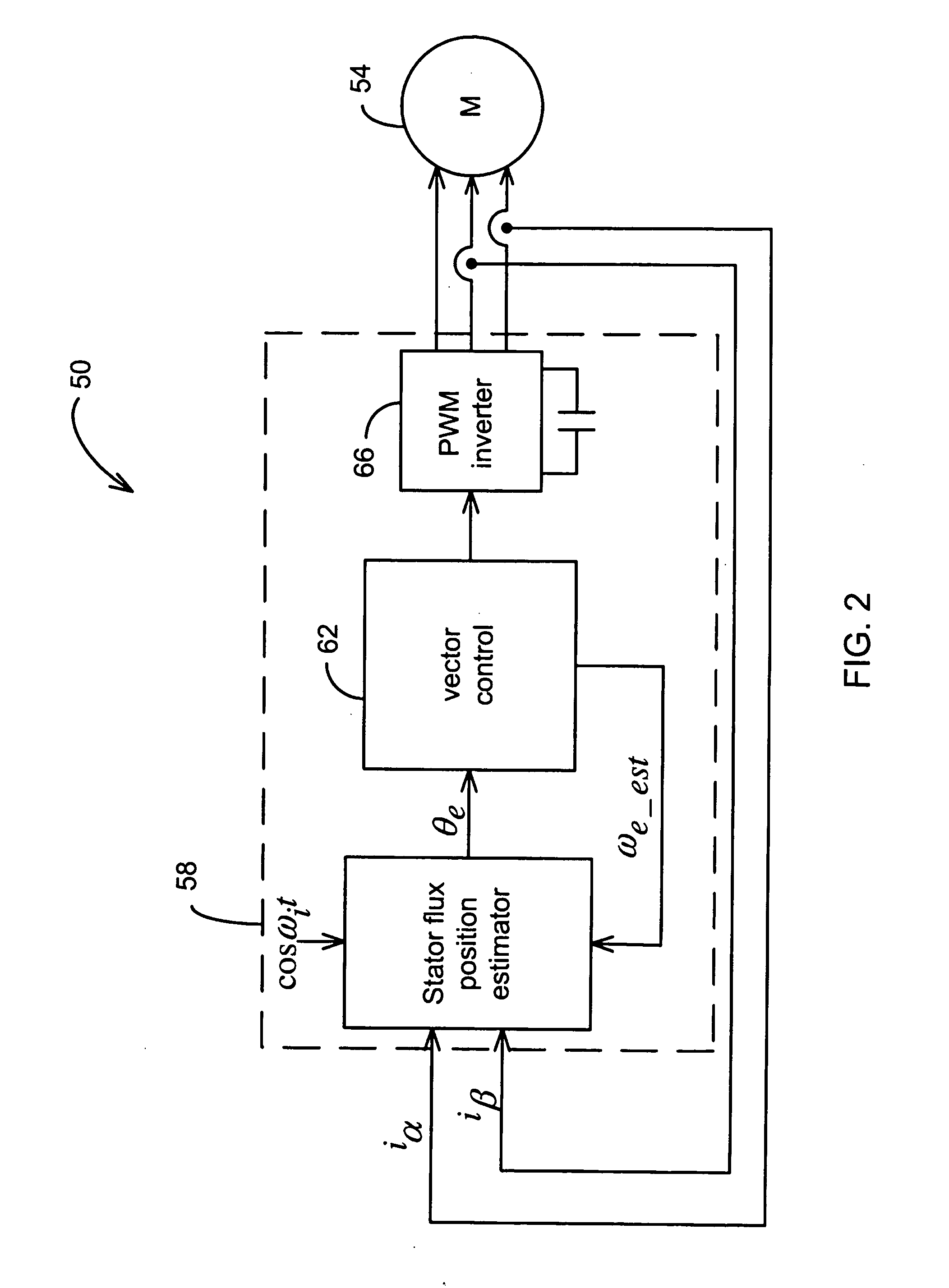Decoupling a harmonic signal from a signal path
a signal path and harmonic signal technology, applied in the direction of electronic commutators, electric controllers, dynamo-electric converter control, etc., can solve the problems of harmonic components changing, mapping can take considerable time, and reduce the dynamic performance of estimation blocks
- Summary
- Abstract
- Description
- Claims
- Application Information
AI Technical Summary
Benefits of technology
Problems solved by technology
Method used
Image
Examples
Embodiment Construction
[0020] The following description of various embodiments is merely exemplary in nature and is in no way intended to limit the invention, its application, or uses. Although embodiments of the present invention are described in connection with induction motors and induction motor control systems, it should be understood that the invention is not so limited. Embodiments are contemplated for use in connection with many different types of electrical and electromechanical circuits and systems wherein it is desired to decouple a harmonic signal from a signal path.
[0021] A motor apparatus according to one embodiment of the present invention is indicated generally in FIG. 2 by reference number 50. A motor 54, for example, an induction motor, is driven via a pulse-width modulation (PWM) controller 58. The controller 58 includes a stator flux position estimator 100 into which is injected a high-frequency signal as further described below. Motor stator input currents ia and iβ are input to the ...
PUM
 Login to View More
Login to View More Abstract
Description
Claims
Application Information
 Login to View More
Login to View More - R&D
- Intellectual Property
- Life Sciences
- Materials
- Tech Scout
- Unparalleled Data Quality
- Higher Quality Content
- 60% Fewer Hallucinations
Browse by: Latest US Patents, China's latest patents, Technical Efficacy Thesaurus, Application Domain, Technology Topic, Popular Technical Reports.
© 2025 PatSnap. All rights reserved.Legal|Privacy policy|Modern Slavery Act Transparency Statement|Sitemap|About US| Contact US: help@patsnap.com



